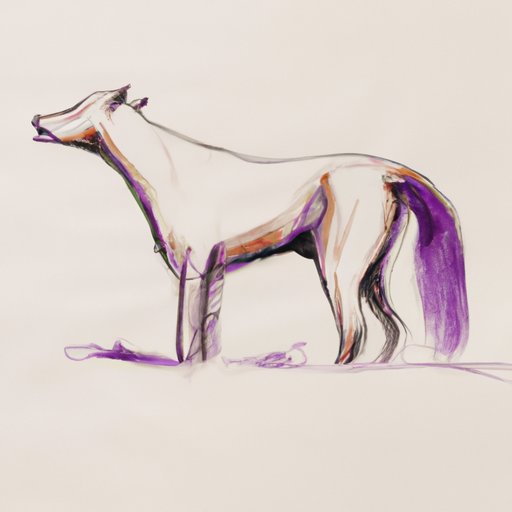
Introduction
Drawing tails can be a complex task for artists who want to create realistic and imaginative works. Whether you are drawing tails of animals, dragons, or monsters, it is vital to understand the anatomy and study the right reference images to create an accurate and detailed representation. This article is for beginners and experienced artists who want to learn how to draw tails using different mediums and techniques.
Understanding the Anatomy of a Tail
The first step to drawing an accurate tail is understanding the anatomy of the tail. Different animals have different types of tails, including straight tails, curly tails, and bushy tails. Each tail has a unique shape, length, and thickness. For example, rats and mice have long, thin tails with small hairs, while lions have bushy tails with long hairs.
The tail is an extension of the spine and is attached to the base of the coccyx or tailbone. Tails are highly mobile and are used for balance, communication, and propulsion in many animals. Understanding how the tail is attached to the body and how it moves is essential to correctly drawing a tail.
Studying Reference Images
Studying reference images is essential to drawing a tail accurately and realistically. It would help if you looked for photographs and illustrations of the animal or creature tail you want to draw. Analyze the images carefully, and take note of the tail’s shape, size, texture, and color. Use the images as a guide when drawing, sketching, and shading your tail.
There are several tips to use reference images effectively. First, choose high-quality images that show the tail from different angles and positions. Second, use a variety of images to capture different aspects of the tail, such as the texture, color, and movement. Third, try to visualize how the tail would move by imagining the animal or creature’s behavior in different situations.
Drawing the Tail
Breaking down tail drawing into simple shapes is a great technique to create an accurate and proportionate tail. Start with a basic shape that resembles the tail, such as a cylinder or cone, and then refine it by adding details. For example, if you are drawing a cat’s tail, you can start with a simple cylinder and add the curve, texture, and hairs in the later stage.
Sketching efficiently and effectively is crucial when drawing tails. Start with light and loose sketches, using a pencil or pen, and then refine them by adding the details. Draw from different angles and positions to get a better understanding of how the tail interacts with the animal or creature’s body.
Shading and Highlighting the Tail
Shading and highlighting are essential to creating depth and dimension in your tail drawing. The basic principle of shading is to add value to the tail by creating contrast between the light and dark areas. Highlighting, on the other hand, is adding a bright spot or reflection to the tail to create a glossy, shiny effect.
Techniques for adding depth and dimension to the tail include blending, hatching, and cross-hatching. Blending involves using a blending tool, such as a blending stump or your finger, to smudge and soften the shading between light and dark areas. Hatching and cross-hatching are techniques that involve drawing parallel or criss-crossing lines to create darker areas.
Exploring Different Mediums and Techniques
Different drawing mediums can create different effects when drawing tails. Common mediums used for drawing tails include pencils, charcoal, pastels, and markers. Each medium has unique advantages and disadvantages, such as the ability to create fine lines, smudging, or blending.
When choosing the right medium for your tail drawing, consider the texture, color, and feel you want to create. For example, if you want to create a softly shaded and colorful tail, pastels may be the perfect choice. If you want to create sharp lines and texture, charcoal may be a better option.
Examples of Tails from Various Animals, Real, and Fantastical
Viewing examples of tails from various creatures is a great way to get inspiration for your tail drawing. Real animals, such as lions, tigers, and zebras, have unique tails that can challenge you to push your drawing skills. You can also find mythical creatures, such as unicorns and dragons, with distinctive tails that will challenge your imagination.
Experimenting with different tail shapes, textures, and colors can help you develop your drawing style and create unique and impressive artworks.
Conclusion
In conclusion, drawing a tail requires an understanding of the anatomy, studying reference images, breaking down shapes, and shading techniques. By following the tips and techniques above, you can create realistic and imaginative tails that take your artworks to the next level. Remember to experiment with different mediums and have fun.




